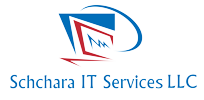
Why is a good onboarding experience so important?
Sorry to break it to you but it’s not just your first impression you have to worry about. Throughout the onboarding experience everyone is on show, from the receptionist to the CEO, every interaction matters.
The recruitment process is a costly and time-consuming activity. We all want to hire the best people, and more importantly, strive to retain them as well. Yet, the first impression an organisation has on its new recruits can either make or break this relationship.
To ensure a loyal and long-term relationship is formed, you must ensure they make a good first impression through one key area: onboarding. A positive onboarding experience for new hires lessens the chance of premature exits, meaning that your attrition rate is lowered, and your best people want to work with you.
But wait, there’s more. A positive onboarding experience also increases productivity amongst your people as they have a clear understanding of the expectations placed upon them and are more likely to take pride in their purpose within the organisation. On a wellbeing level, an excellent onboarding program can reduce anxiety for new hires, giving them the best leg up possible.
How is this going to improve turnover?
You’re probably wondering what’s in it for me? Truth is a bunch of things. The benefits of a strong onboarding process can’t be overlooked. A structured program assists in assimilating new people into the workplace through from the dreary policies and procedures, to introducing them to others in the office; and clearly communicating the expectations of their role.
According to SHRM, 69% of employees will stay with a company for three years if their onboarding experience was positive. As the first interaction with the company once hired, onboarding must be well-structured to ensure the first impression made on new hires is positive. A poor program can result in the early exit of quality new people. Your number one objective should be to retain these strong candidates.
What difference does a disengaged employee make to the bottom line?
A lack of productivity and engagement amongst teams can be extremely costly to your business. Trust us on this one, it makes a pretty big difference. According to Officevibe, disengaged employees can cost a business up to $550 billion annually. A strong onboarding program can lessen this effect.
A program which clearly communicates the expectations of new people in their role, help them in understanding the lay of the land and their place at work, will help to allow them to feel a sense of belonging at work. Through demonstrating the value of their position in contributing to a common organisational goal, engagement and productivity will skyrocket. And who doesn’t love that?
What can you do about it?
Fact: Happy employees are more productive. According to McKinsey, one of the top drivers of happiness at work is good relationships. Setting up the foundations for these relationships during onboarding is thus important and beneficial.
Is there a better way to do this? Yes, obviously. Automated recruitment technology, in partnership with communication with your people can enhance the onboarding process. Automation can be used to send welcome emails with necessary information on policies, procedures, and induction materials. Your new people can also be provided with access to a portal where such documents can be accessed and reviewed. This also works to acquaint new people with your workplace prior to their kick-off date, providing them with time to understand what to expect.
Starting a new job can be a nerve-wracking experience. Establishing an onboarding program which effectively integrates new hires into the business can work to lessen employee anxiety.



